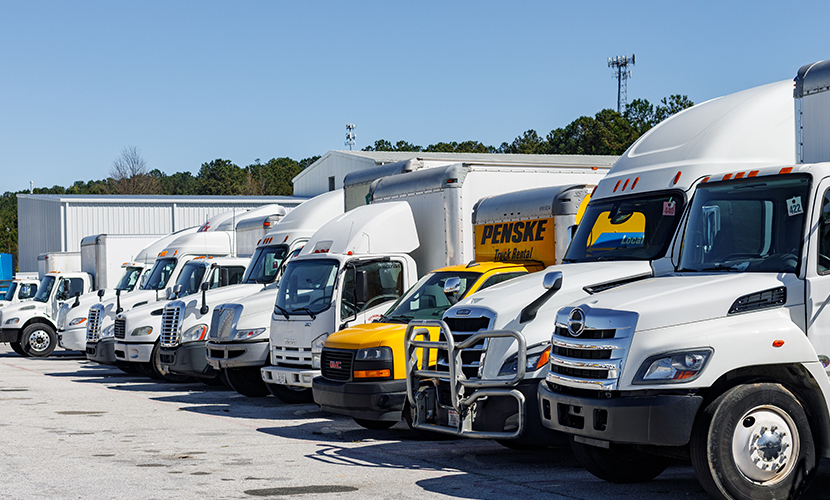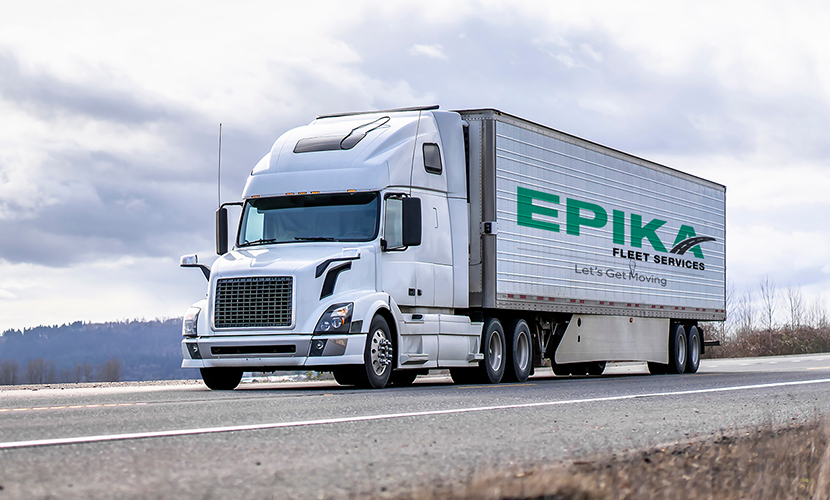Comparing Centralized and Decentralized Fleet Maintenance

Fleet maintenance is an essential part of fleet management. Keeping your commercial vehicles in good repair is required by law for passing inspections, and it’s a key part of ensuring your costs stay low, your fuel efficiency is high, and your operations are smooth. The question is, how do you perform your fleet maintenance?
Fleet maintenance falls into two types: centralized and decentralized. There are pros and cons to both methods, so let’s discuss them and which option is the better one for your situation.
A Common Growth Scenario
Let’s start off with a hypothetical. This is the story of a shipping company, from founding to crisis.
When the company is founded, it’s a small courier service within a city. The company employs a handful of drivers and a small fleet of trucks – less than half a dozen – to provide their services. Their area of operations is small, but their service is high-quality, so they quickly garnered a reputation as an excellent option for local shipping.
This company doesn’t have the budget or the space to hire mechanics and set up an in-house shop to maintain their trucks. Instead, they have a partnership with a local commercial vehicle dealer and use their facility for maintenance and repairs. It’s a simple and effective solution.
Over time, this shipping company grew, and they decided to expand. They opened a second base location the next town over to expand their courier services not just within that town but between the two. This second office carries the same branding, but the management and operations are largely independent. While both locations are held to the same general company standards, the decision on which trucks to purchase and how to manage the fleet is left to the regional manager.
Moreover, because the service center for the original fleet is an entire city over, it’s inefficient to redirect all of the trucks from the new location back to the old location’s service center. The new branch, instead, finds a local commercial vehicle service center to use and makes its own deal.
All of this is managed and approved by the top-level management of the company, but between fleet managers of each location, the differences slowly grow clear. Maybe one side’s service center is worse than the other. Maybe one manager slacks on maintenance scheduling and adopts more of a break-fix attitude. Or, maybe it all runs just fine.
Over time, as a company expands and opens up more locations, this process continues. Each new branch establishes its own relationships, its own fleets, its own record-keeping, and its own service center relationships. Some ambitious branches might even open up their own service centers to keep it all in-house.
Once the company reaches the point where they’re dealing with interstate commerce regulations and where optimizing things like fuel efficiency can be a matter of six figures of difference in expenses company-wide, looking at this mish-mash of relationships and standards becomes a very daunting prospect.
If it ain’t broke, don’t fix it, or so the saying goes. It works… or does it?
Defining Centralized and Decentralized Fleet Maintenance
Normally, considering the terms centralization and decentralization, you might expect that it means setting up a central hub for service for your fleet. A single centralized location where regional fleet vehicles go for maintenance, where records can be kept, schedules can be managed, and more.
In reality, this isn’t quite true. While some companies set up these kinds of true-central service centers, most don’t, even when their operations are centralized.
In fleet management, centralization refers to the operations of the company, not the location of the service.
A decentralized service program occurs when a company operates in regional chunks, at the neighborhood level, the city or county level, the branch level, or whatever division makes the most sense as the company grows. The example scenario above, with each location forging its own contracts and operating under the loose direction of corporate in terms of maintenance schedules and regulatory compliance, is an example of decentralized fleet maintenance.
So what, then, is centralized fleet maintenance?
Centralized fleet maintenance is bringing all of these branches into the fold, under the command of standardized contracts, pre-established relationships with other expansive service providers, and under the more direct management of experienced fleet maintenance directors.
Are There Benefits to Decentralized Fleet Maintenance?
Though we paint it in a somewhat negative light, decentralized fleet maintenance is not without its benefits.
First and foremost, it minimizes the management burden on a central corporate office. Corporate can set policies and leave it up to the individual branches to follow them however works best for them.
“There are a number of cogent arguments that can be made for decentralizing some, if not all, fleet functions. The single most powerful case is usually made from the standpoint of responsibility.
In many companies, responsibility for the financial results is in the field. In a company where the fleet is homogenous, oftentimes, one level or another of field management is responsible for performance, including profitability. When a manager’s performance is judged this way, it will include budgeting and cost. As such, next to personnel costs, providing and operating a fleet is the largest cost included by a field sales or service operation.
Field management, therefore, can make a case to have some level of control over how the fleet is operated, and, in particular, how their budget is impacted by that operation.” – Fleet Financials.
It also allows individual branches to pick and work with facilities that work best for them. When you standardize contracts, they often won’t apply evenly; some branches might be conveniently located almost directly next to a relevant service center, while others might find that the nearest option is half an hour’s drive away. When the option isn’t given to the local management, inefficiencies like that can build up.
Since a lot of regions have their own quirks that an upper-level management team might not recognize or be able to acknowledge, leaving fleet maintenance decisions up to the local staff might also be beneficial to the overall operations of that branch.
The Drawbacks to Decentralized Fleet Maintenance
All of the above relies on two things being true:
- The regional management team knows what they’re doing.
- The regional management team has the best interests of the company at heart.
Very often, one or both of these is incorrect. Sometimes, local management may have some idea of what they should be doing but don’t know how to best go about it. They haven’t hired a fleet manager, just a general manager, and since they don’t have expertise in fleet maintenance, they don’t know how to distinguish a good service provider from a mediocre or bad service provider.
Moreover, there’s a much greater risk of incidental or intentional corruption. Maybe the regional manager strikes up a deal with a local service center and pockets a kickback; maybe they’re simply inexperienced, and a sub-par service provider convinces them they’re receiving better service than they are. Whatever the case may be, there’s an immense amount of room for inefficiencies and sub-par service, often without regional managers knowing other options exist.
There’s also the bigger picture to consider. Very often, what makes sense or is efficient for smaller-scale operations is actually broadly inefficient for larger operations; allowing each region to pick its own “best” can be unnecessarily expensive for the company as a whole.
“The problem with decentralizing into more ownership is a tangible decline in productivity. Yes, the decentralized maintenance workforce more quickly addresses the urgent work than does the centralized force. Yet, decentralized groups show less interest in scheduling work in advance and are more difficult to steer away from doing reactive work.” – Reliable Plant.
Decentralized fleet maintenance has tangible problems as well.
- Instead of being guided by experienced maintenance experts, decisions are made by managers who have a lot on their plate and less experience with commercial vehicle service, regulations, and more.
- Without the bird’s-eye view of the company as a whole, inefficiencies can add up.
- A lack of centralized software and data tracking leads to lost records, deferred maintenance, poor adherence to maintenance schedules, and much more.
This is all compounded if each region is also making its own decisions about the kinds of vehicles to purchase and when; instead of having standardized vehicles of a few types throughout your fleet, you can have many more, all with their own issues that need tracking.
How Centralized Fleet Maintenance Works
Centralized fleet maintenance begins by taking responsibility away from regional managers and putting it in the hands of directors with experience, capability, and, critically, much more overall data and resources than regional managers can access.
The core watchword of centralized fleet maintenance is standardization. Everything is brought under one banner, under one service provider or one network of them, with one team or director making the decisions.
It begins with centralized record-keeping. Vehicle details, maintenance logs, manufacturer recalls and alerts, and consolidated data can all be sent to a central system where maintenance directors can review them. Trends, overarching data, and means of optimization can then be extracted and applied company-wide across all the disparate elements of the fleet.
Standardizing telemetry data and, more importantly, the technology used to gather it is also an important part of centralized fleet maintenance. Using the same data tracking across all vehicles in a fleet is a key part of making sure the appropriate kinds of data are gathered. This may involve upgrades to the technology of many vehicles in a fleet, but that’s just part of the expenses of centralizing maintenance.
The biggest factor in centralized maintenance is standardizing the service providers used for maintenance across a company. For example, for preventative maintenance services, you might partner with a company like ours and our network of service providers across the nation. That way, you have standard contracts, standard pricing, standard services, and a standardized quality of service, and you can access those services anywhere in the country.
One of the biggest benefits of centralizing fleet maintenance is that you cover all the bases, and you can be assured of that coverage. Since you aren’t dealing with shifting standards and different service providers operating at different levels, you have a greater guarantee of service quality and adherence to compliance rules and standards.
Additionally, through record-keeping, you can apply better schedules for preventative maintenance. Every vehicle needs to be inspected, every vehicle needs ongoing maintenance, and every vehicle needs to minimize the risk of catastrophic unplanned failure. You can even access top-level route planning software to ensure that trucks nearing their scheduled maintenance window end routes in an area near a service center instead of needing to travel across town unnecessarily.
All of these optimizations, from large to small, have a ripple effect across the company. What might save a few dollars on fuel here and there can add up to immense savings across the whole of the company. Increased vehicle uptime and smoother operations, standardized maintenance packages, and no unexpected fees can all compound over time.
Does Centralized Fleet Maintenance Have Drawbacks?
Nothing in this world is perfect. Centralized fleet maintenance has some steep requirements to perform adequately.
For one thing, it’s heavily reliant on the people making decisions to have the appropriate information, which means your telemetry and record-keeping needs to be on point. Without the right data, data-driven decision-making is impossible.
Relatedly, the people making these decisions need to be knowledgeable and experienced. Above, we mentioned the potential issue of a regional manager being conned because they don’t know any better; that’s bad, but it’s way worse if it’s your maintenance director making poor choices.
One of the greatest challenges is the transition from decentralized to centralized. Establishing new processes, new software, new telemetry, and new policies will all involve growing pains. For larger organizations, these kinds of transitions can take months or even years to be done properly.
When handled properly, centralizing fleet maintenance is a hugely beneficial decision. Fortunately, we’re here to help; as a national network of service providers specifically for commercial fleets, we can help you get excellent fleet maintenance set up and running in short order. Simply reach out to us to get started!






